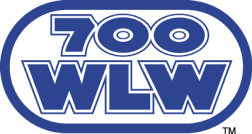Related Research Articles
A clear-channel station is an AM radio station in North America that has the highest protection from interference from other stations, particularly concerning nighttime skywave propagation. The system exists to ensure the viability of cross-country or cross-continent radio service enforced through a series of treaties and statutory laws. Known as Class A stations since the 1983 adoption of the Regional Agreement for the Medium Frequency Broadcasting Service in Region 2, they are occasionally still referred to by their former classifications of Class I-A, Class I-B, or Class I-N. The term "clear-channel" is used most often in the context of North America and the Caribbean, where the concept originated.

WLW is a commercial news/talk radio station licensed to Cincinnati, Ohio. Owned by iHeartMedia, WLW is a clear-channel station, often identifying itself as The Big One.

KDAL is a commercial AM radio station in Duluth, Minnesota, serving the Duluth-Superior area of Northeastern Minnesota and Northwestern Wisconsin. KDAL is owned and operated by Midwest Communications and broadcasts a talk radio format. The radio studios and offices for KDAL, KDAL-FM, KDKE, WDSM, WDUL and KTCO are at 11 East Superior Street, Suite 380, in downtown Duluth.
The Crosley Broadcasting Corporation was a radio and television broadcaster founded by radio manufacturing pioneer Powel Crosley, Jr. It had a major influence in the early years of radio and television broadcasting, and helped the Voice of America carry its message around the world.

WCKY – branded Cincinnati's ESPN 1530 – is a commercial sports AM radio station licensed to Cincinnati, Ohio, serving the Cincinnati metropolitan area. Owned by iHeartMedia, WCKY is the Cincinnati affiliate for ESPN Radio; the flagship station for FC Cincinnati; a co-flagship station for the Cincinnati Bengals Radio Network; and the Cincinnati affiliate for the UK Sports Network and the U of L Sports Network. The WCKY studios are located in the Kenwood section of Sycamore Township, while its transmitter is located at a four-tower facility in suburban Villa Hills, Kentucky. In addition to a standard analog transmission, WCKY is available online via iHeartRadio.
WBOB is a commercial AM radio station in Jacksonville, Florida. The station airs a talk radio format and is owned by Chesapeake-Portsmouth Broadcasting Corporation. Weekdays begin with a local news and information show, followed by mostly syndicated programming, including shows from Mark Levin, Mike Gallagher, Dennis Prager, Jay Sekulow and Red Eye Radio. Most hours begin with Townhall News. Some hours are paid brokered programming. The station calls itself "Talkradio AM 600 & FM 101.1 WBOB".

KFAB is a commercial AM radio station in Omaha, Nebraska, with studios and offices on Underwood Avenue in Omaha. It broadcasts a news/talk format and is owned by iHeartMedia, Inc.

KAAY is a commercial radio station in Little Rock, Arkansas, owned by Cumulus Media. It airs a Christian radio format of instruction and preaching, with most of the schedule made up of brokered programming featuring local and national religious leaders, including Charles Stanley, Jim Daly, John F. MacArthur, and Albert Pendarvis. Overnight, automated contemporary Christian music is heard. The station's studios are located in West Little Rock, and the transmitter is located off McDonald Road in Wrightsville. KAAY is Arkansas's primary entry point station for the Emergency Alert System.

The extended mediumwave broadcast band, commonly known as the AM expanded band, refers to the broadcast station frequency assignments immediately above the earlier upper limits of 1600 kHz in International Telecommunication Union (ITU) Region 2, and 1602 kHz in ITU Regions 1 and 3.

WSAI is a Cincinnati, Ohio commercial radio station. Owned and operated by iHeartMedia, its studios, as well as those of iHeartMedia's other Cincinnati stations, are in the Towers of Kenwood building next to I-71 in the Kenwood section of Sycamore Township, and its transmitter site is in Mount Healthy.

KFXX is a commercial AM radio station in Portland, Oregon. It is owned by Audacy, Inc. and runs a sports radio format. The studios and offices are on SW Bancroft Street in Portland.

WRVV is a commercial FM radio station licensed to serve Harrisburg, Pennsylvania. The station is owned by iHeartMedia, Inc. and broadcasts a classic rock format. The station's studios and offices are located at 600 Corporate Circle in Harrisburg.

KJFK and KJFK-FM are a pair of terrestrial radio stations, which serve Austin, Texas, and Llano, Texas, United States respectively. Both facilities are owned by Township Media and broadcast an adult hits format as "96.3 Jack FM", utilizing the nationally syndicated Jack FM licensing. KJFK can also be heard in Austin proper on translator K242DE and in Giddings, Texas on KGID, both of which also operate on 96.3 FM.
WARB is a radio station licensed to serve Dothan, Alabama, United States. The station, which began licensed operation in 1996, is currently owned by Brian Baker and Anthony Donelson, through licensee good Guys Broadcasting, LLC. The station is licensed to broadcast only during daylight hours.
WMPC is a non-commercial AM radio station licensed to Lapeer, Michigan, and serving the northern suburbs of Detroit and the Flint area. It broadcasts a Christian talk and teaching radio format and is owned by the Calvary Bible Church of Lapeer. It first began broadcasting on December 6, 1926, and is the oldest continuously operating Christian radio station in the United States.

WFEA is a commercial AM radio station in Manchester, New Hampshire, airing a talk radio format. It is owned and operated by Saga Communications of New England LLC, which also owns 95.7 WZID and 96.5 WMLL. WFEA's studios and offices are on North Commercial Street in Manchester.
KGOW is a Vietnamese language terrestrial full service radio station based in Houston, Texas, United States, owned by Gow Media, LLC. KGOW's programming schedule is leased to a third party group that utilizes the broadcast day to air Vietnamese focused programming for southwest Houston, Bellaire, and the areas in southwest Harris County where 1560's signal is strongest. Viet Radio programming is simulcasted on 1480 KNGO Dallas.
KDAZ is a commercial radio station in Albuquerque, New Mexico. It airs a combination of syndicated talk radio shows and Christian radio programming. It is owned by Pan American Broadcasting Co., Inc.
KERN is a commercial radio station licensed to Wasco-Greenacres, California, and serving the Bakersfield metropolitan area. The station is owned by American General Media. The radio studios and offices are in the American General Media complex at 1400 Easton Drive, STE 134 in Bakersfield.

KRBA, is a terrestrial American radio station, licensed to Lufkin, Texas, United States. The station is currently owned by Kasa Family Limited Partnership.
References
- ↑ "Limitation of Power of Radio Broadcast Stations" (Senate Resolution 294), Journal of the Senate of the United States of America (Seventy-Fifth Congress, Third Session), June 9, 1938, page 507.
- ↑ "Four Stations File For 500 kw. Power", Broadcasting, July 1, 1936, page 77.
- ↑ "Advertising on Radio Must Be Limited, Wheeler Warns", Washington Evening Star, December 11, 1938, page 1.
- ↑ "Radio Stations Broadcasting in Standard Broadcast Band", Journal of the Senate of the United States of America (Seventy-Fifth Congress, Third Session), June 13, 1938, page 539.
- ↑ "Limitation of Power of Radio Broadcast Stations", Journal of the Senate of the United States of America (Seventy-Fifth Congress, Third Session), June 14, 1938, page 562.
- ↑ "Revision of FCC Regulations Is Unlikely Before Next Year", Broadcasting, July 1, 1938, page 16.
- ↑ "Proposed New FCC Rules Well Received", Broadcasting, February 1, 1939, pages 16-17, 70-73.